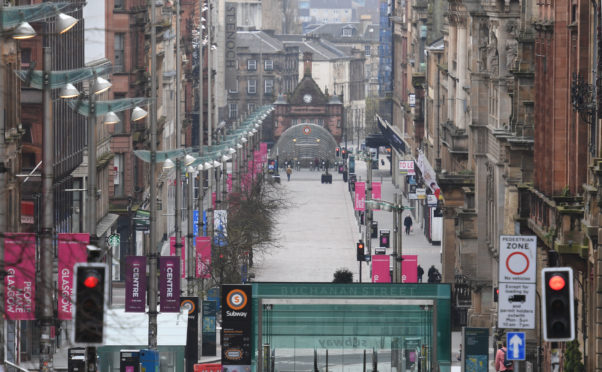
The number of empty shops increased across the UK over the past three months after the impact of the coronavirus lockdown, according to new figures.
The quarterly BRC-LDC vacancy monitor revealed that 12.4% of all shop units were vacant in the three months to the end of June.
This represented a slight uptick from 12.2% in the first quarter, in the eighth consecutive quarter of increasing vacancy rates.
Helen Dickinson, chief executive of the British Retail Consortium (BRC), said the rise was “modest as government support allowed many locations to survive lockdown”.
All types of shopping destination saw vacancy rates increase, with shopping centres having the highest proportion of empty units, at 14.3%, after rising from 14.1% in the previous quarter.
High streets saw the vacancy rate nudge higher to 12.4% for the quarter, from 12.3%.
Retail parks, which have seen steadier footfall since coronavirus hit, reported the lowest vacancy rate, at 8.3%, although this also represented an increase after posting 8.2% in the previous quarter.
Ms Dickinson said: “Covid has accelerated many of the changes in retailing already under way.
“Online continues to grow and retail stores should also have a vital role in our communities, supporting jobs and other businesses which rely on retail footfall.
“The shuttering of too many shops on our high streets will threaten the vibrancy of town centres and damage local economies.”
The report also revealed that London saw the highest increase in empty units, rising to 9.1%, as it was particularly hammered by the virus.
Lucy Stainton, head of retail and strategic partnerships at the Local Data Company (LDC), said: “Since 2018, retail vacancy has risen steadily across the UK, in part due to the widely-discussed oversupply of retail property given changing consumer demands.
“Despite seeing an initial jump in vacancy in Q2, it is still too soon to measure the full impact of the pandemic as almost half of the non-essential retail units that were eligible to reopen following June 15 were still temporarily closed as of July 1.
“Over the coming months, we are forecasting a spike in vacancy as the real fallout of the pandemic is felt.”

Enjoy the convenience of having The Sunday Post delivered as a digital ePaper straight to your smartphone, tablet or computer.
Subscribe for only £5.49 a month and enjoy all the benefits of the printed paper as a digital replica.
Subscribe